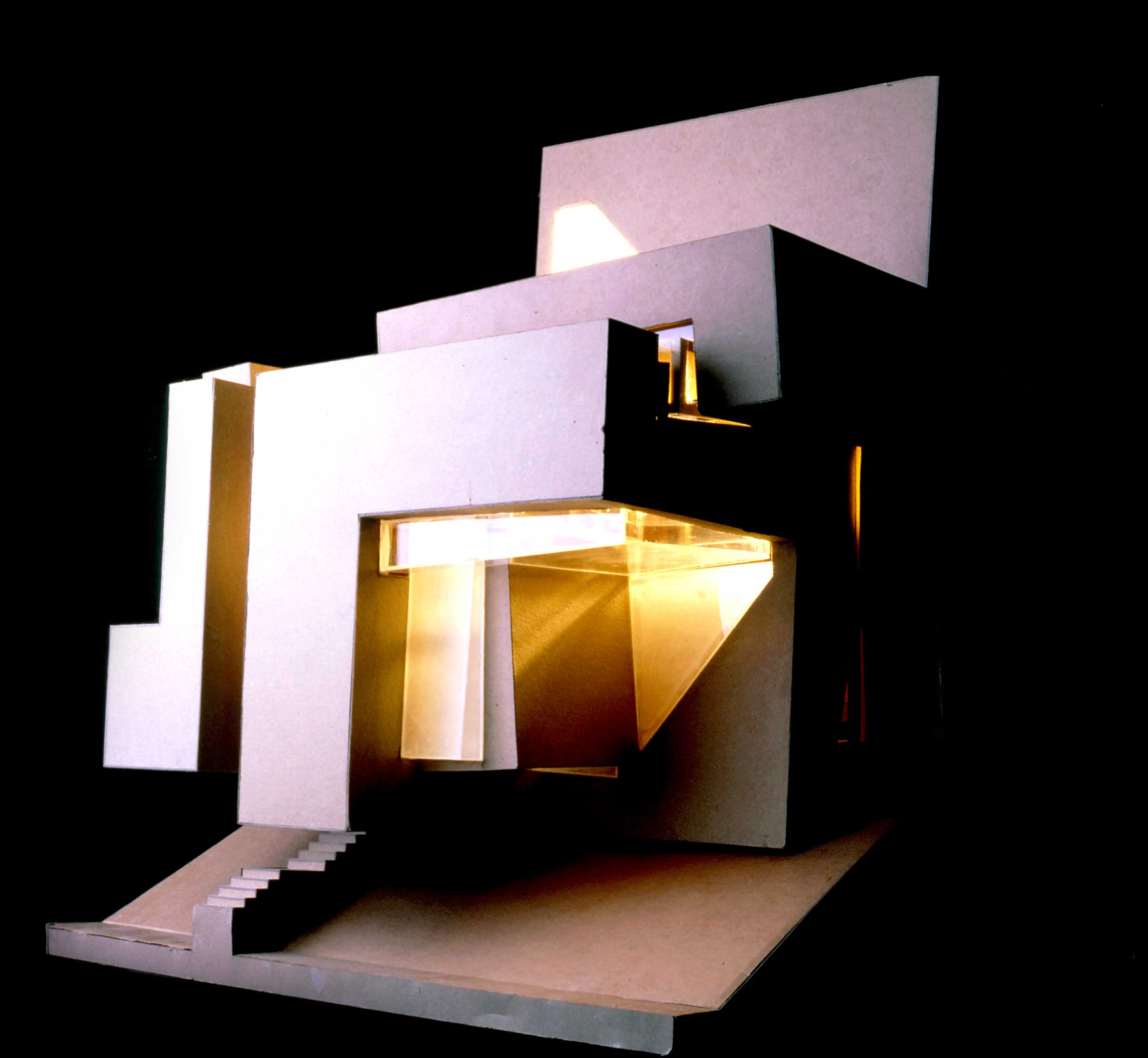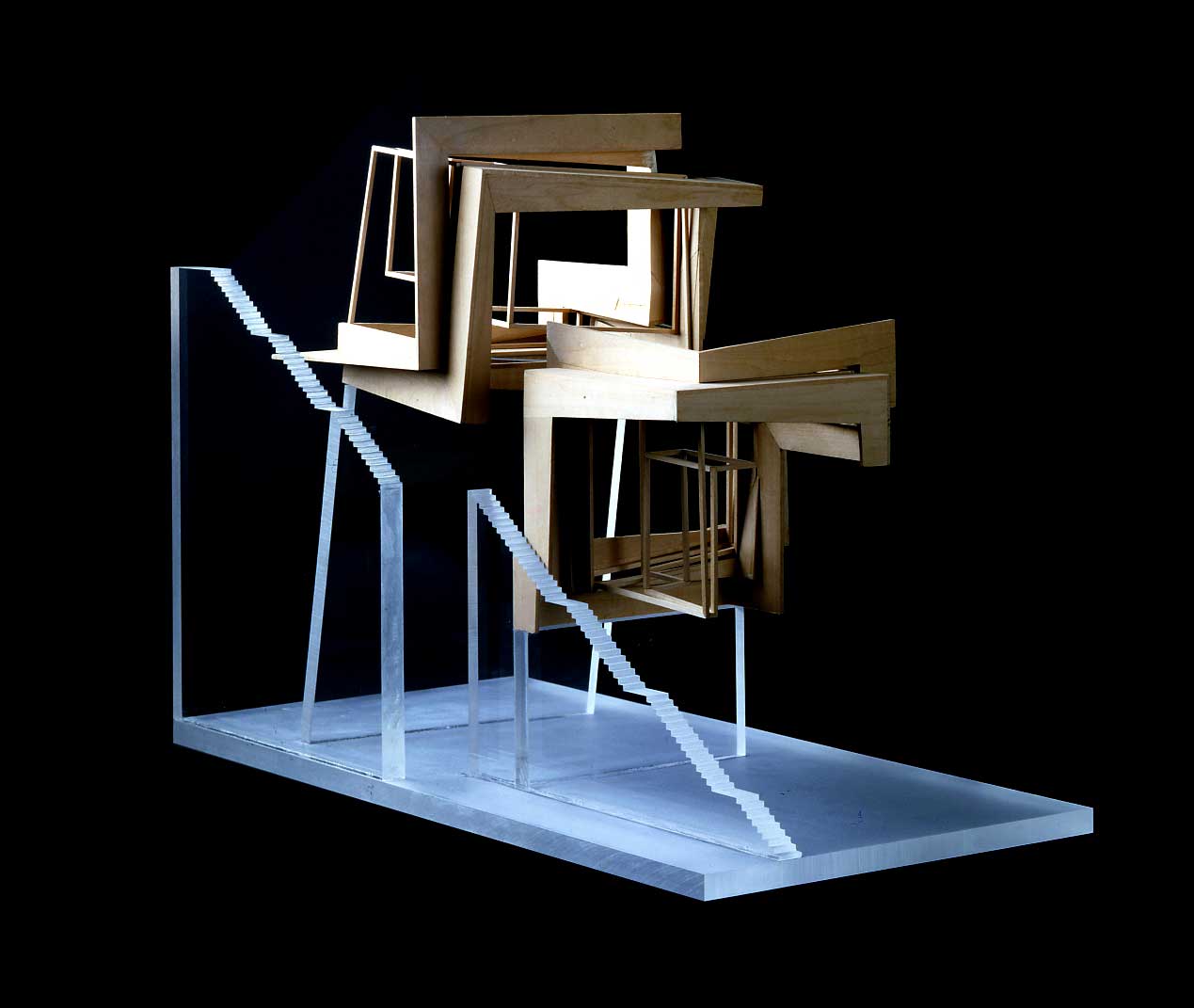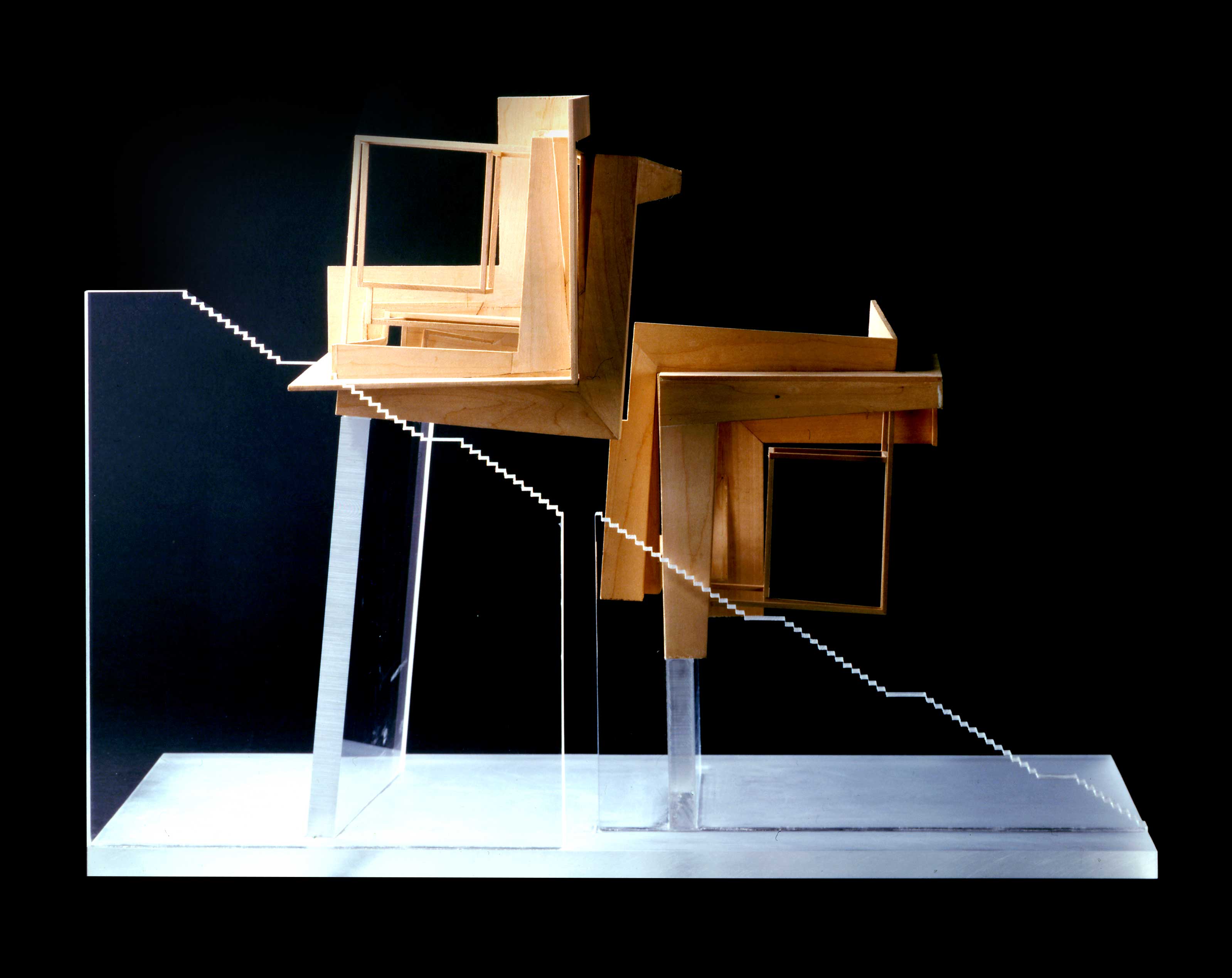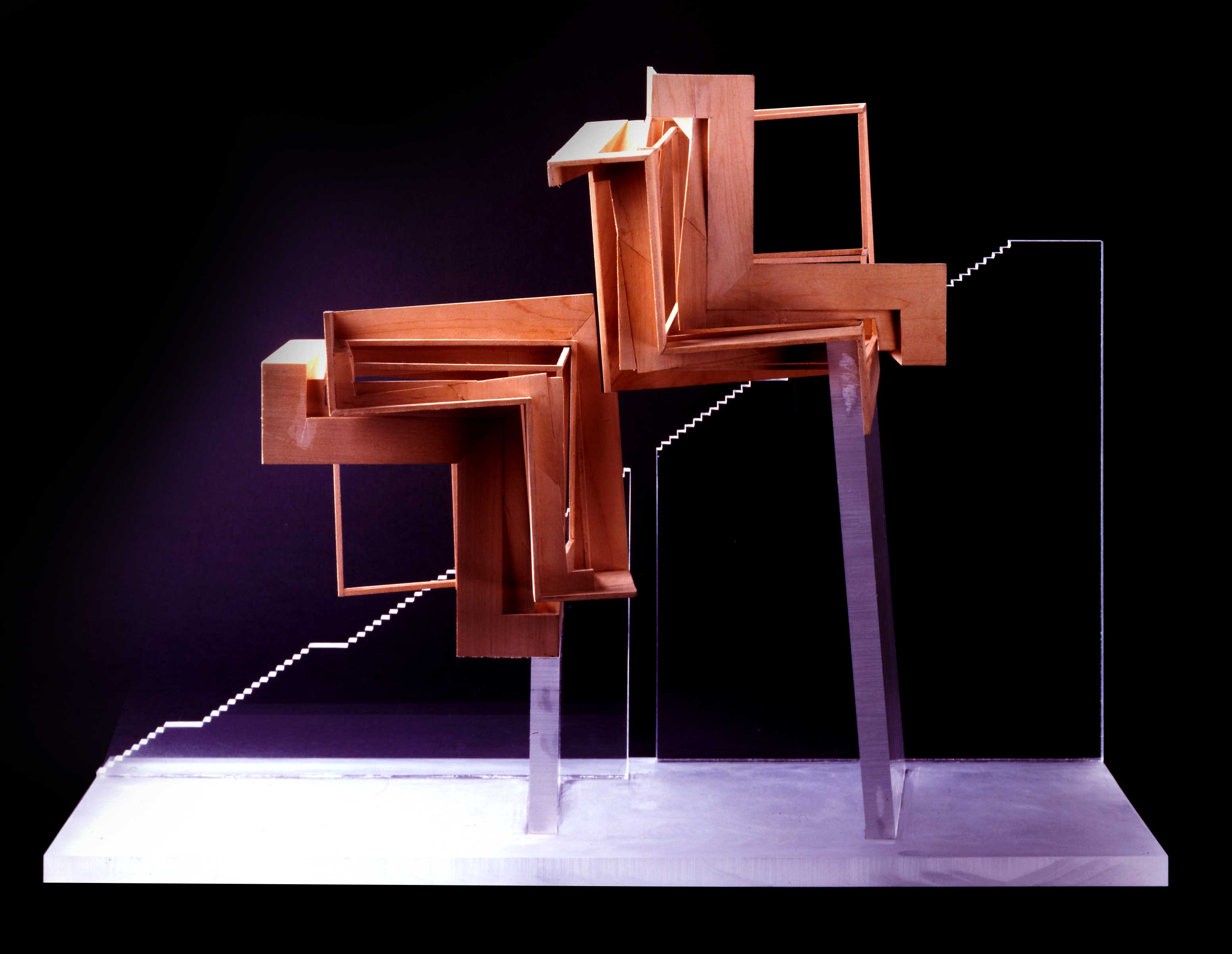
GUARDIOLA HOUSE
The idea of place, or topos, has always been central to man’s relationship to his environment. This design for a house examines the meaning of place and how it has been affected by a changing understanding of the world. Since Roman times, man has defined place as the mark of his struggle to overcome nature. Today the traditional forms of place-making are in question because technology has overwhelmed nature, making the rational grids and radial patterns of the past obsolete. In addition, modern thought has found unreasonableness within reason, the illogical within logic. Thus architecture must ask whether marking man’s conquest of nature is still significant, as well as acknowledge that place (topos) has always contained "no place” (atopia). This breakdown of the traditional forms of place also affects the traditional categories of figure/ground and frame/object.
Since classical times there has been another definition of place, which suggests the simultaneity of two traditionally contradictory states. In Plato’s Timaeus, the receptacle (chora) is defined as something between place and object, between container and contained. For Plato, the receptacle is like the sand on the beach: it is not an object or a place, but the record of the movement of the water, which leaves traces of high-tide lines and scores of imprints – erosions – with each wave.
This house is the manifestation of a receptacle in which it the traces of logic and irrationality are intrinsic components of the object/place. It exists between the natural and the rational, between logic and chaos. It breaks the notion of figure/frame because it is figure and frame simultaneously. Its tangential L-shapes penetrate three planes, always interweaving. These fluctuating readings resonate in the material of the house, which, unlike a traditional structure of outside and inside, neither contains nor is contained, and the imprinted forms that record movements of the pattern are no longer frame or object.
Concept
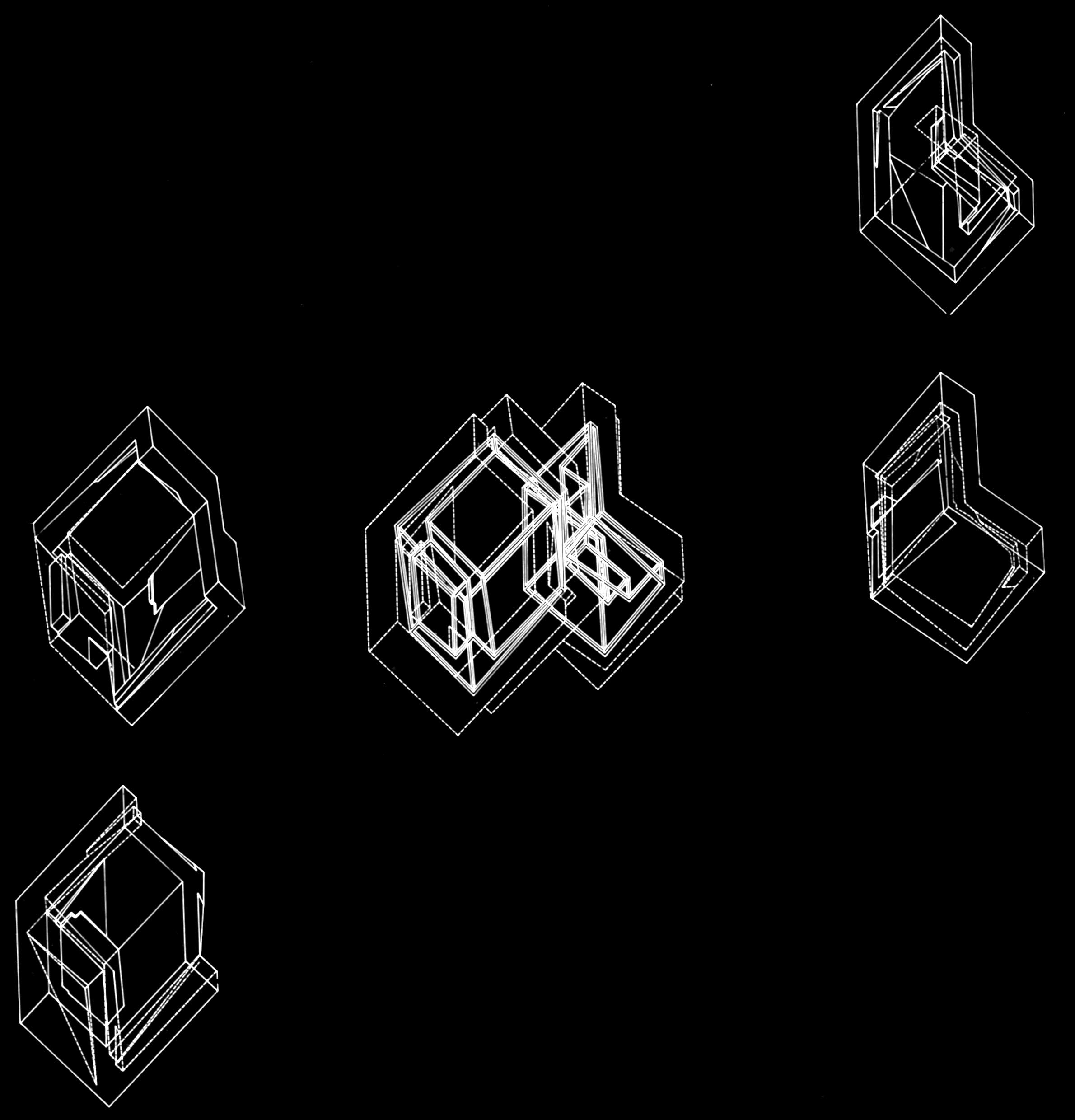
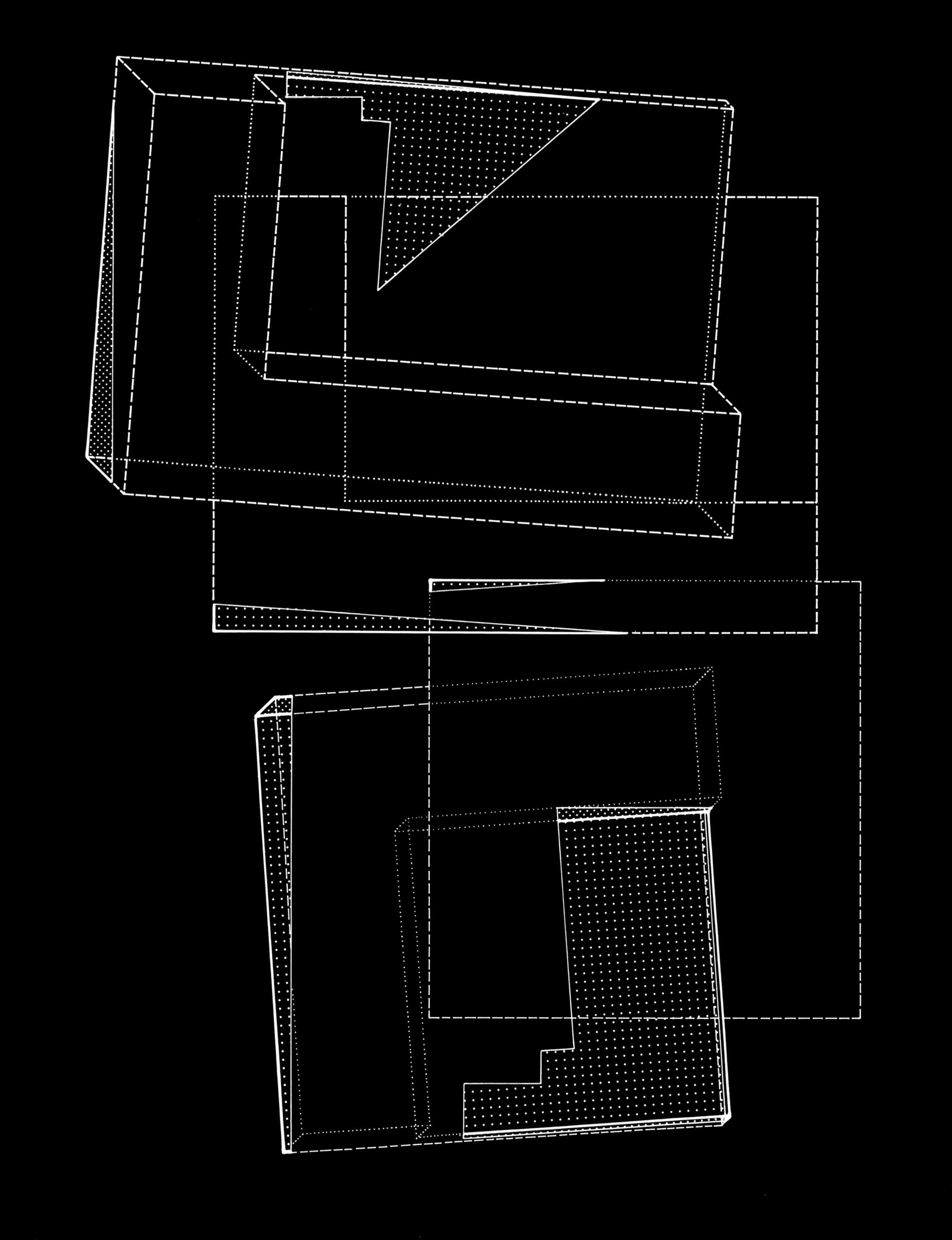
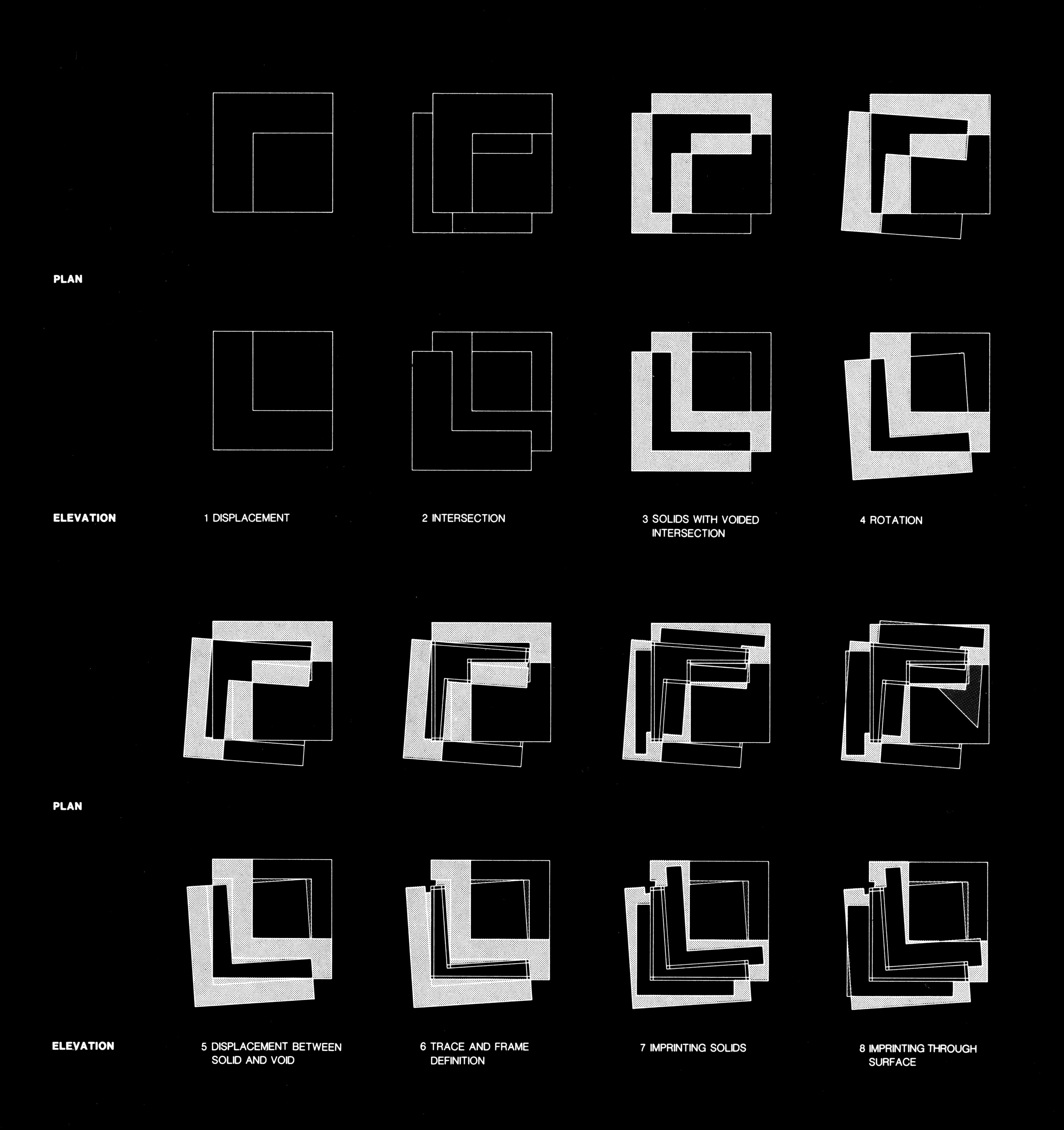
Drawings
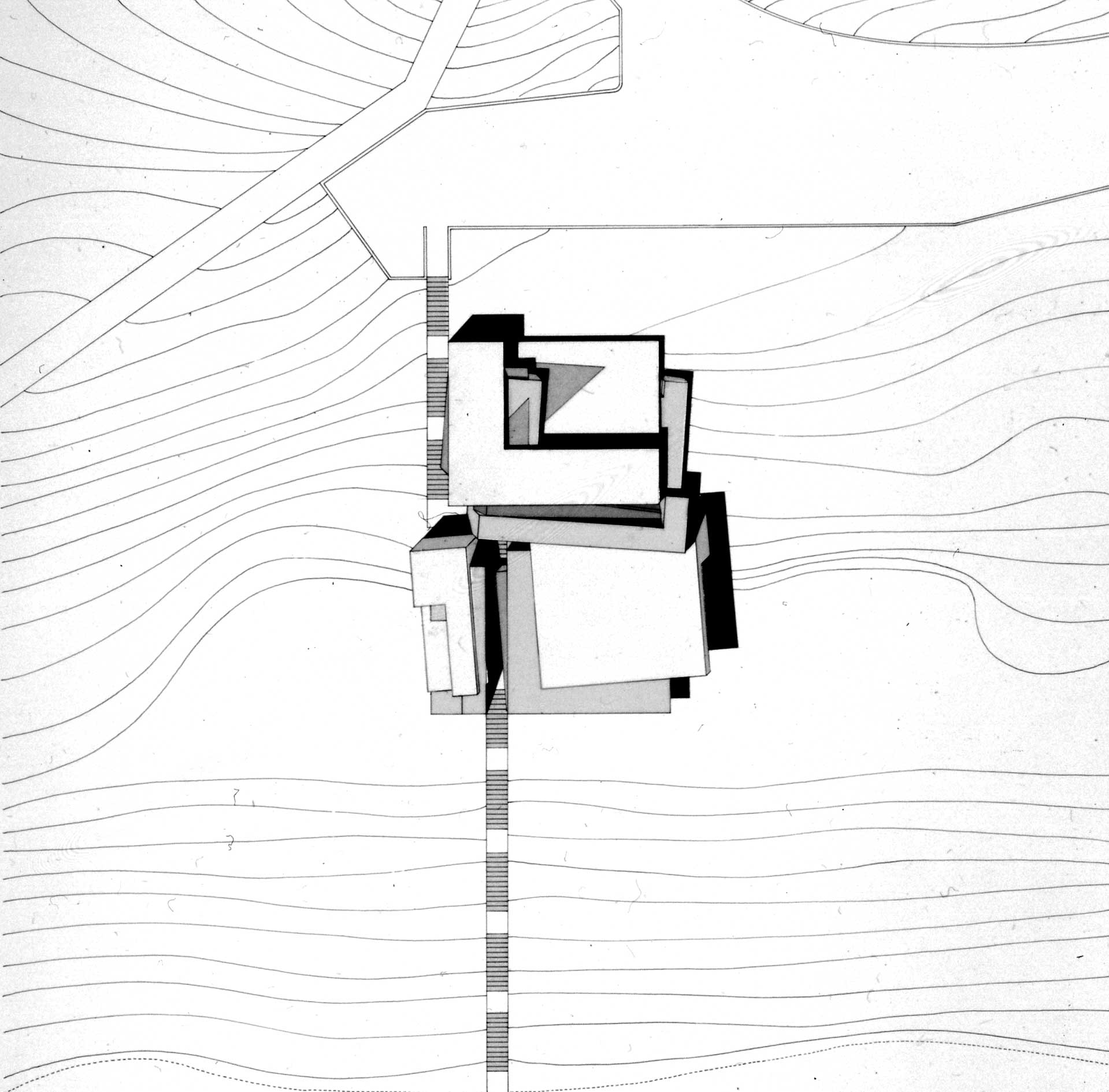
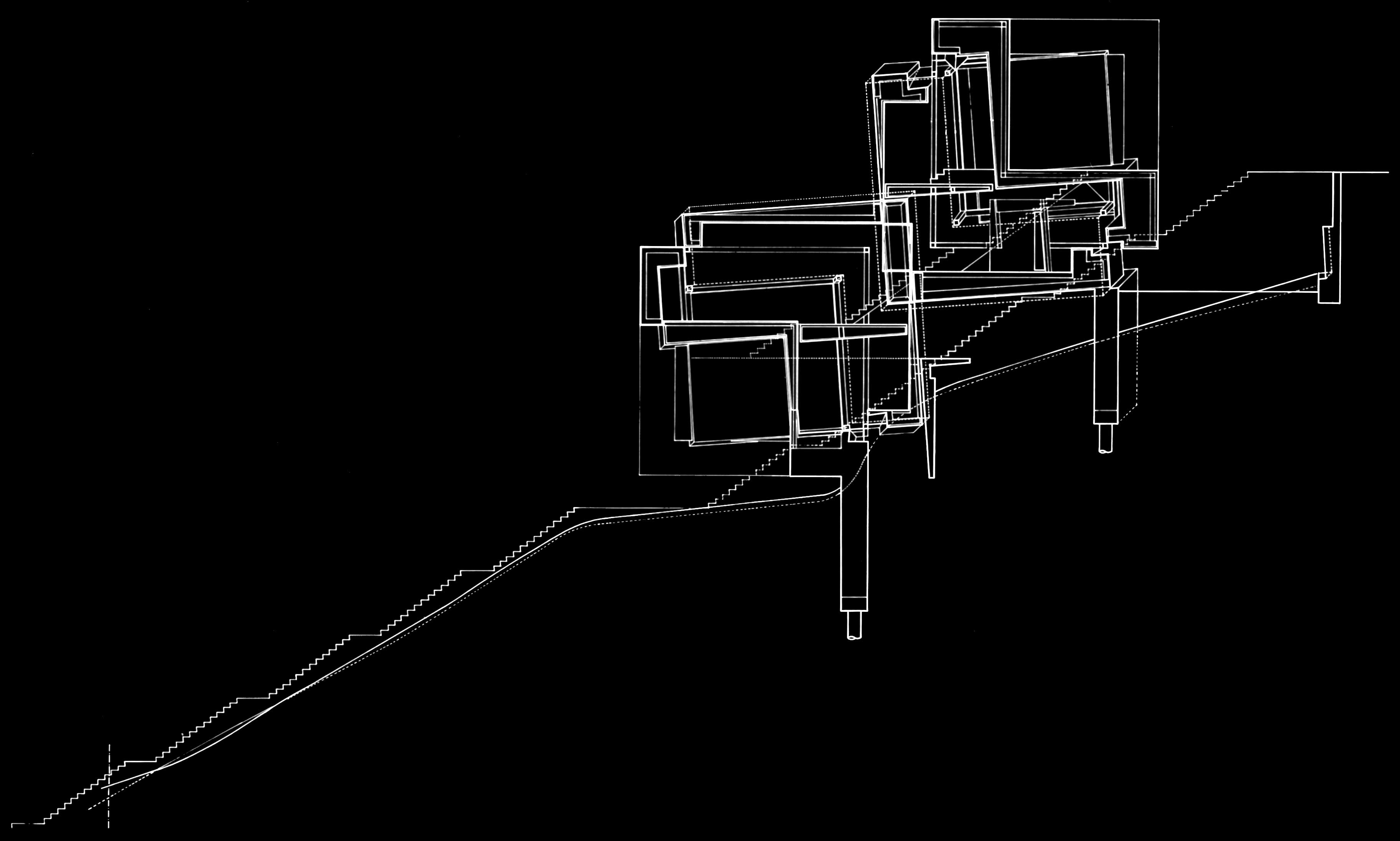
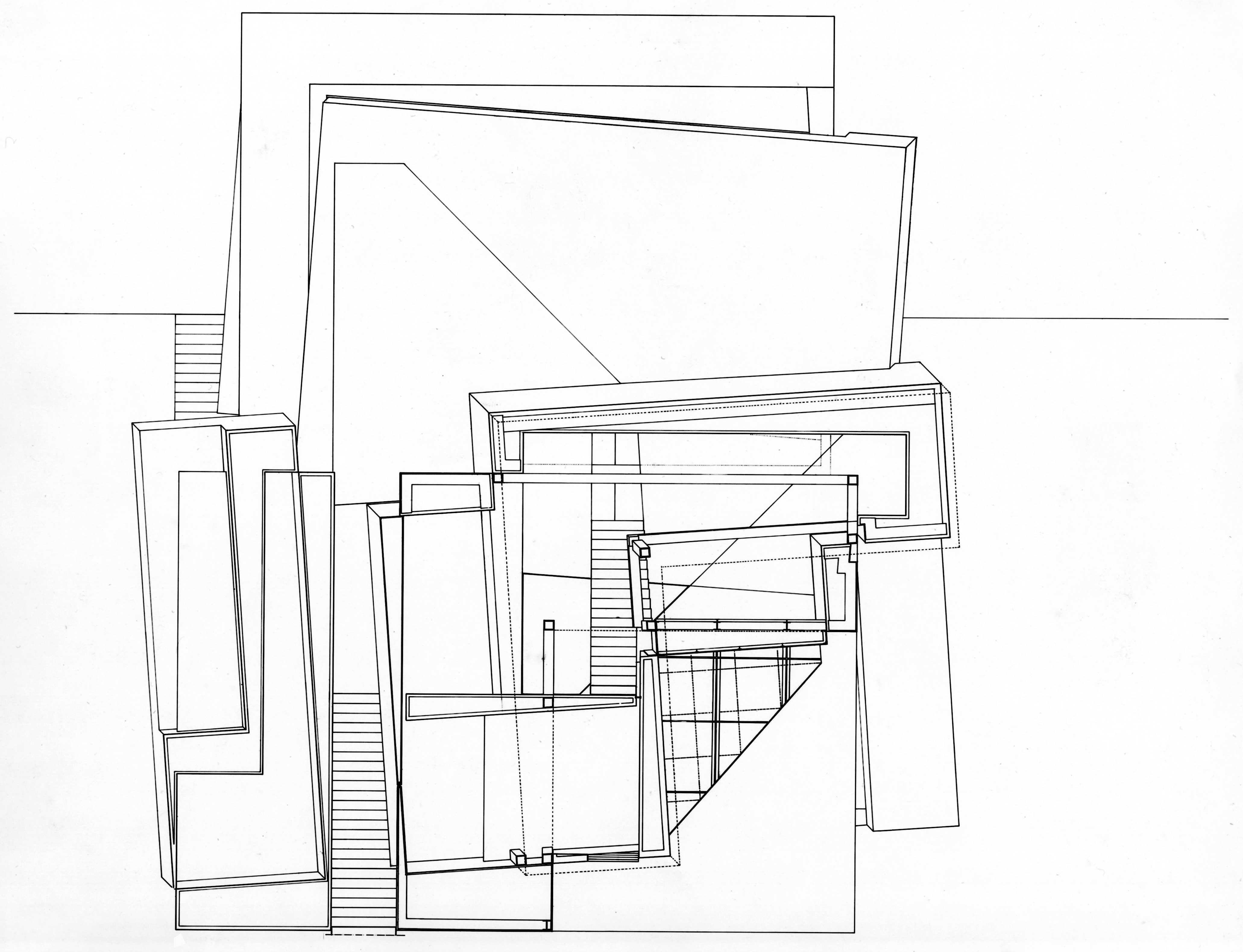
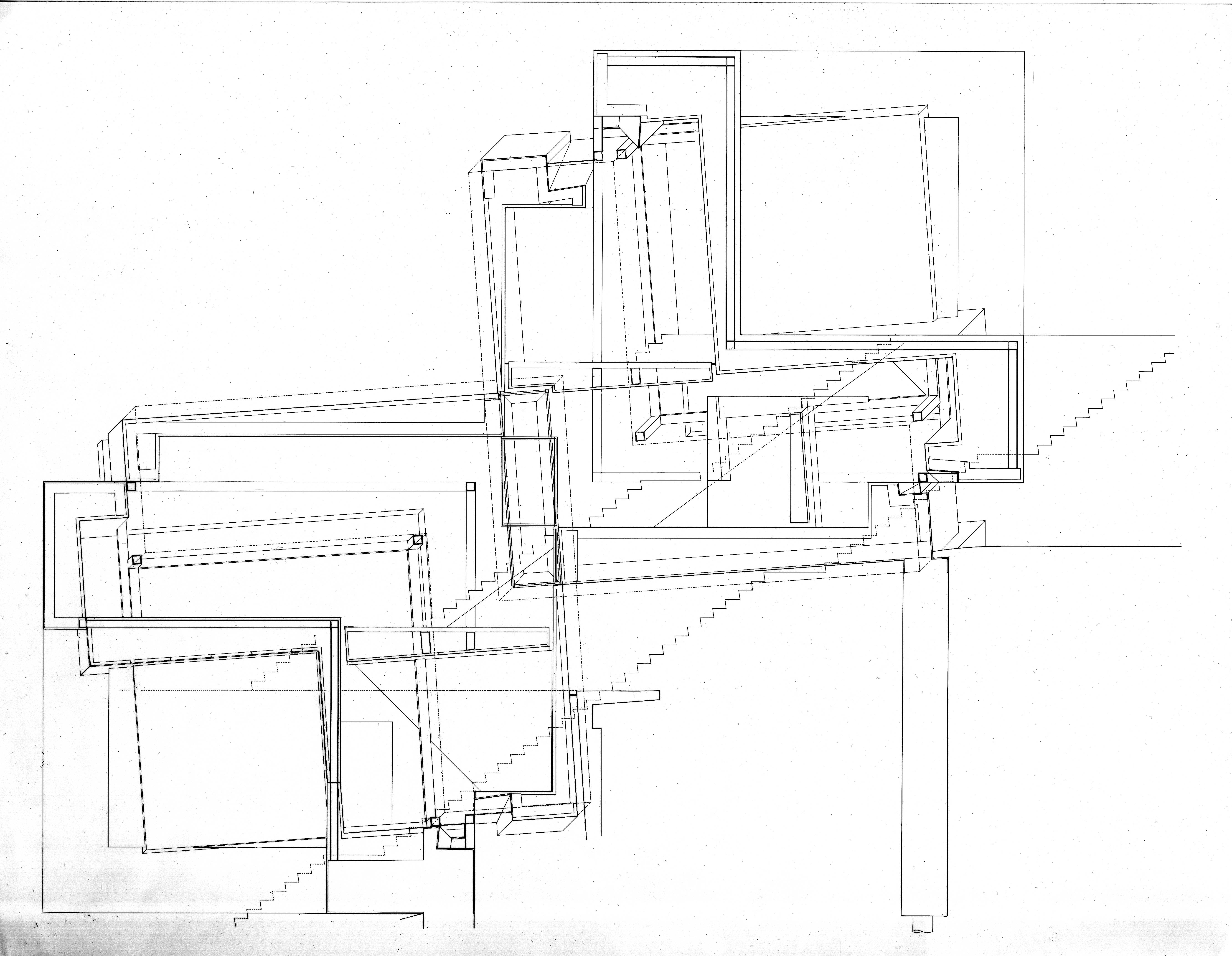
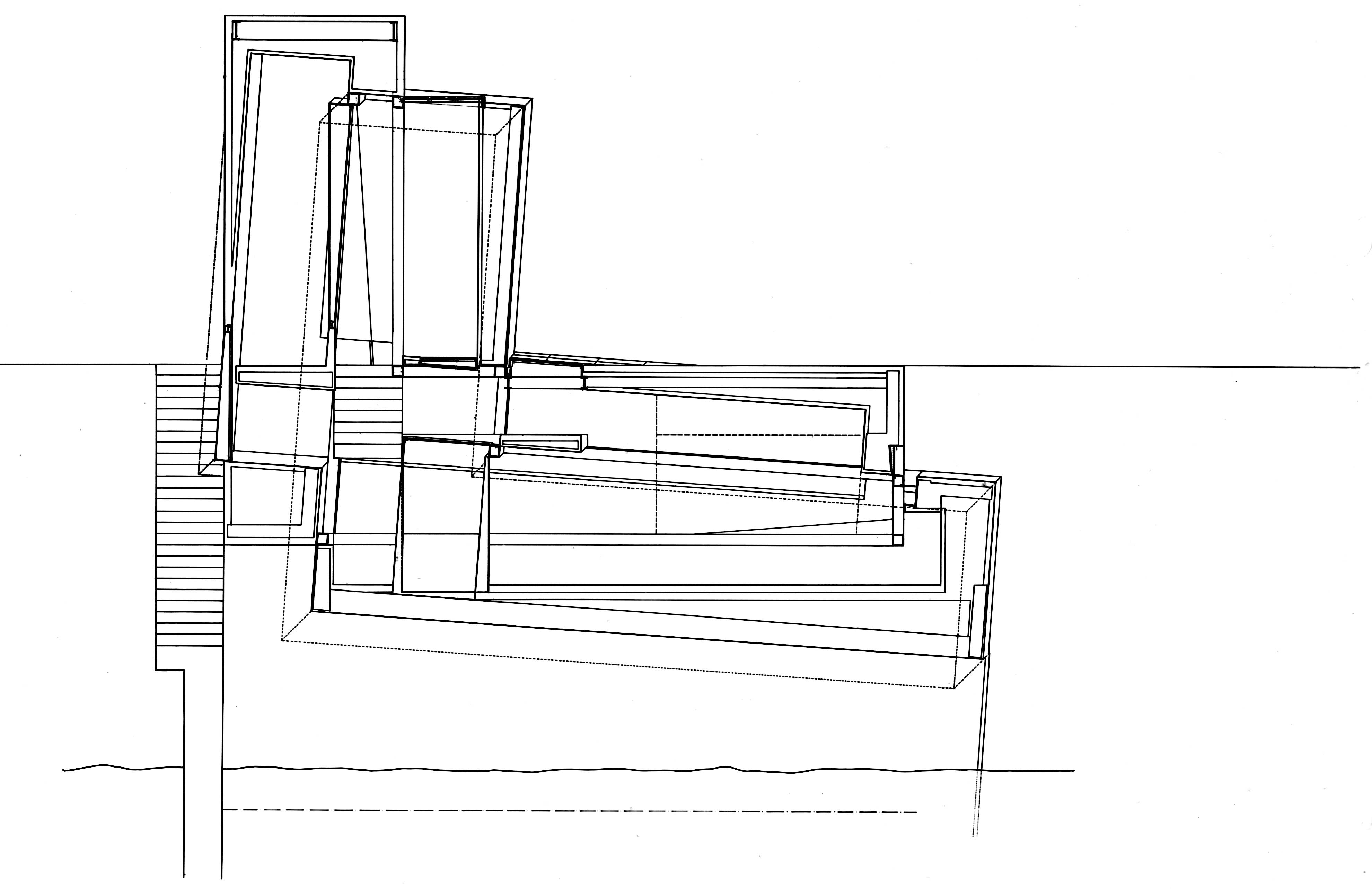
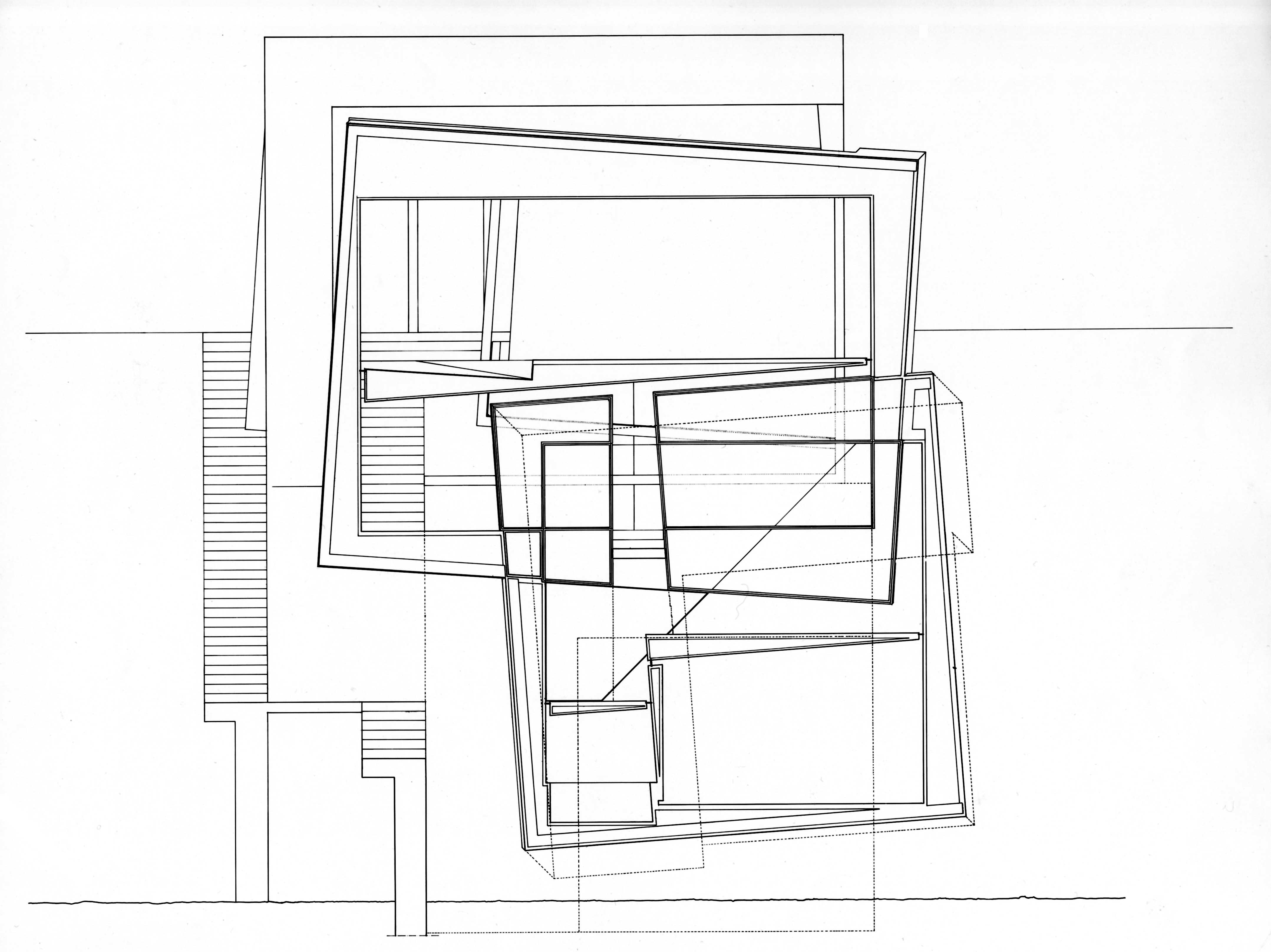
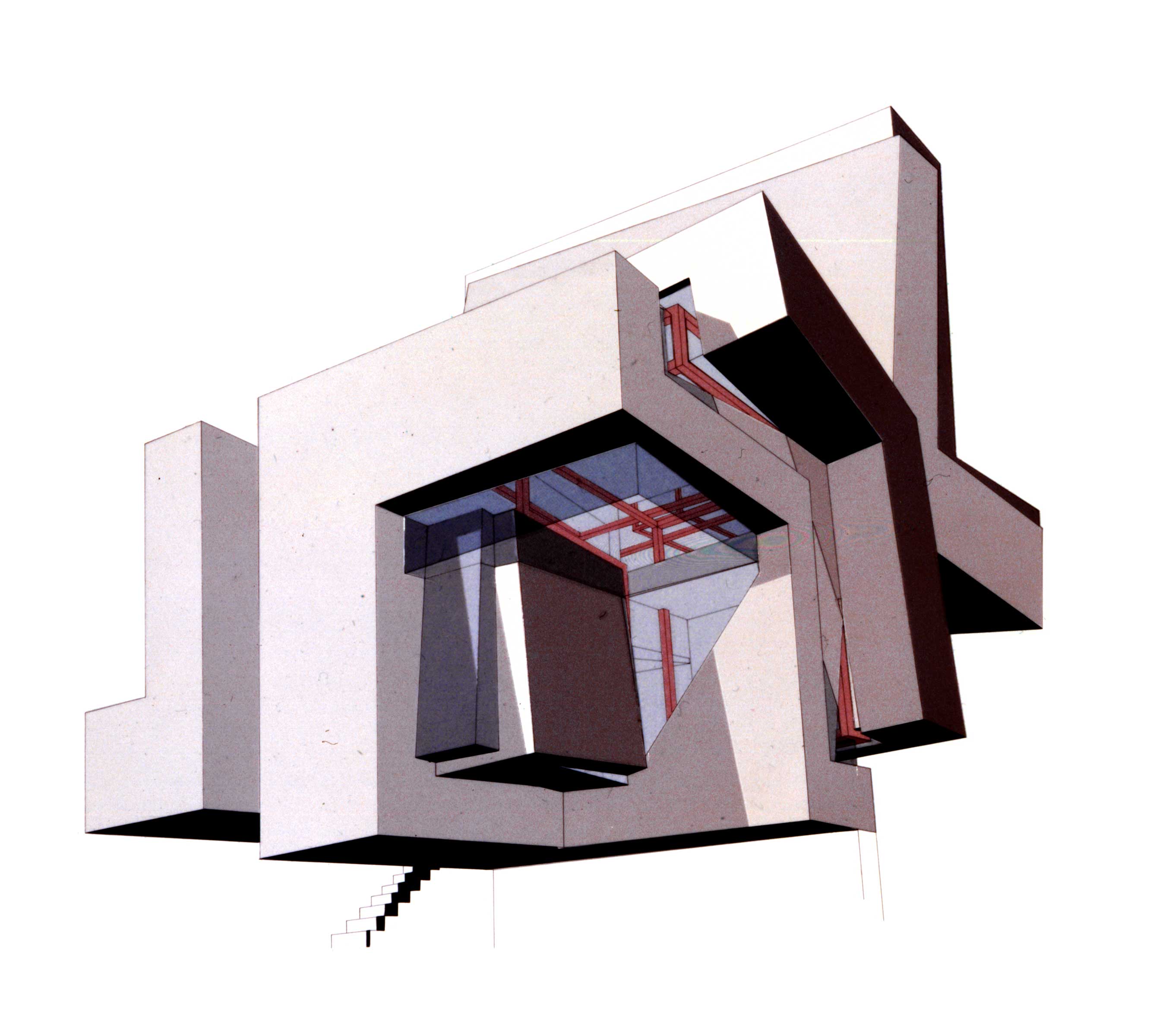
Model photos
